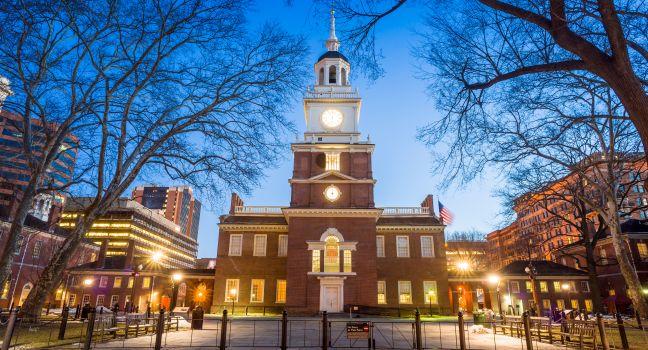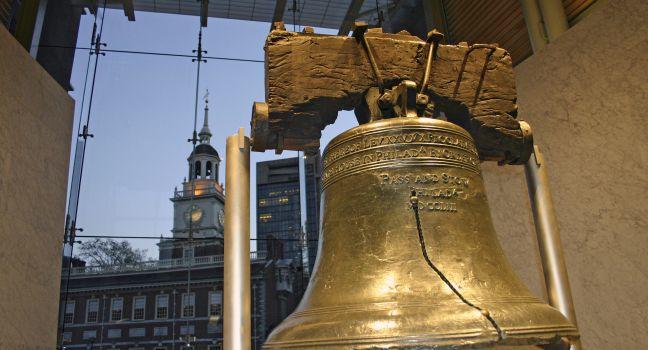Independence Hall

The birthplace of the United States, this redbrick building with its clock tower and steeple is one of the nation's greatest icons. America's most historic building was constructed in 1732–56 as the Pennsylvania State House. What happened here between 1775 and 1787 changed the course of American history—and the name of the building to Independence Hall. The delegates to the Second Continental Congress met in the hall's Assembly Room in May 1776, united in anger over the blood that had been shed when British troops fired on citizens in Concord, Massachusetts. In this same room George Washington was appointed commander in chief of the Continental Army, Thomas Jefferson's eloquent Declaration of Independence was signed, and later the Constitution of the United States was adopted. Here the first foreign minister to visit the United States was welcomed; the news of Cornwallis's defeat was announced, signaling the end of the Revolutionary War; and, later, John Adams and Abraham Lincoln lay in state. The memories this building holds linger in the collection of polished muskets, the silver inkstand used by delegates to sign the Declaration of Independence, and the "Rising Sun" chair in which George Washington sat. (After the Constitution was adopted, Benjamin Franklin said about the sun carving on the chair, "I have the happiness to know that it is a rising and not a setting sun.")
In the East Wing—attached to Independence Hall by a short colonnade—you can embark on free tours that start every 15 to 20 minutes and last 35 minutes. Admission is first-come, first-served; pick up free, timed tickets from the visitor center to avoid waiting in line. The West Wing of Independence Hall contains an exhibit of the national historical park's collection of our nation's founding documents: the final draft of the Constitution, a working copy of the Articles of Confederation, and the first printing of the Declaration of Independence.
In front of Independence Hall, next to the statue of George Washington, note the plaques marking the spots where Abraham Lincoln stood on February 22, 1861, and where John F. Kennedy delivered an address on July 4, 1962. With Independence Hall in front of you and the Liberty Bell behind you, this is a place to stand for a moment and soak up a sense of history. From March through December and on major holidays, free, timed tickets from the Independence Visitor Center are required for entry. Tickets also can be reserved online (www.recreation.gov).




